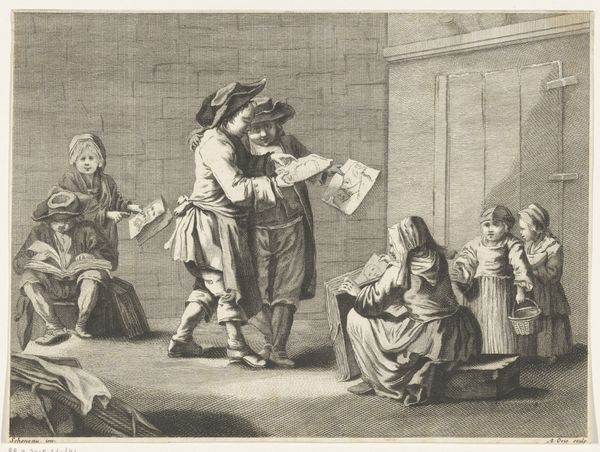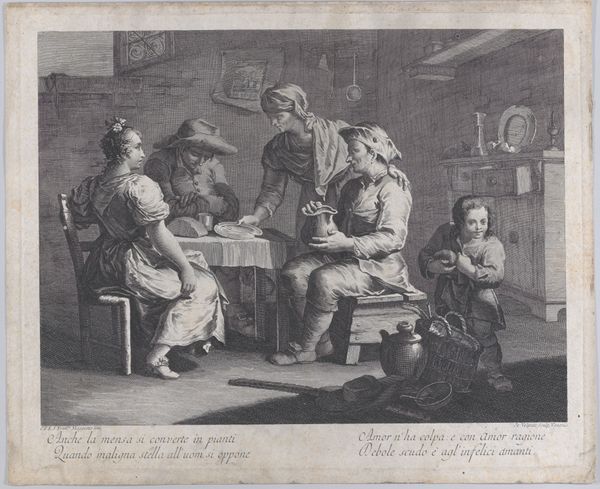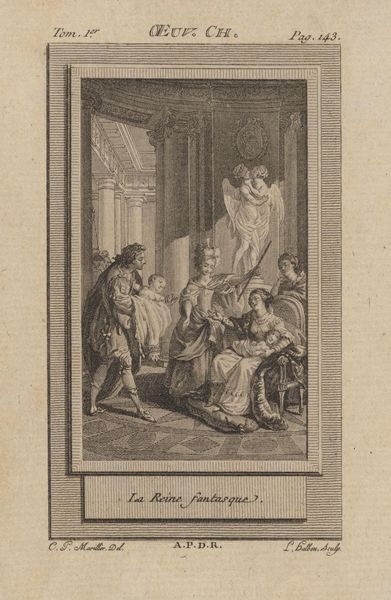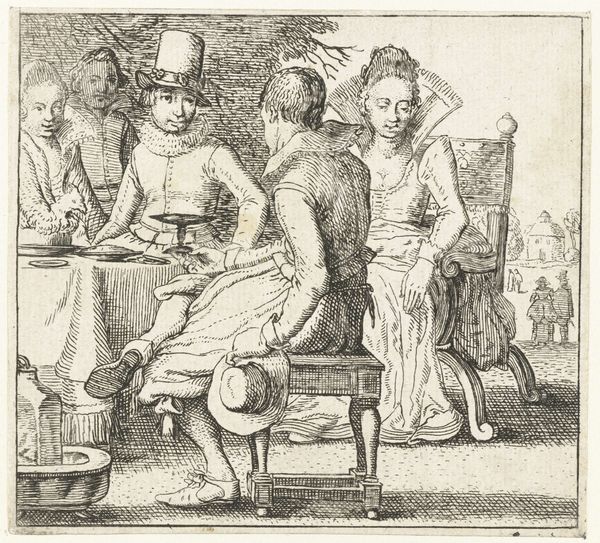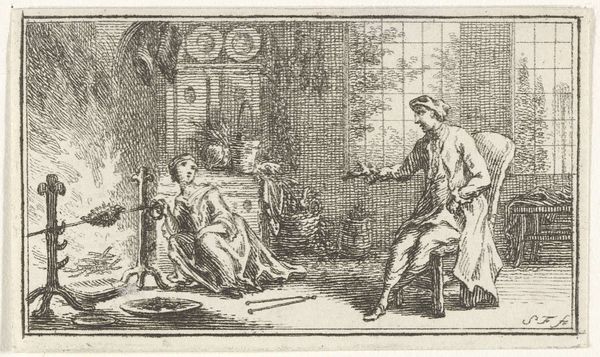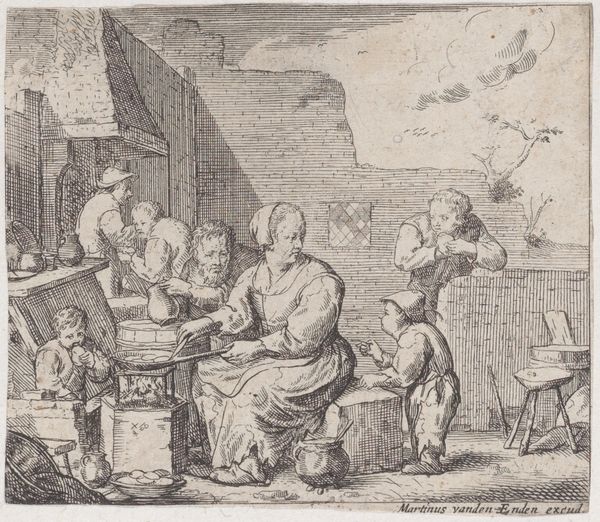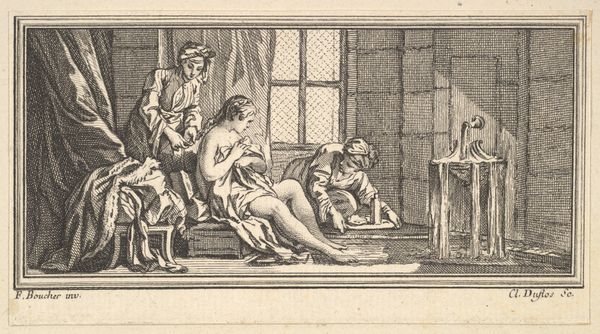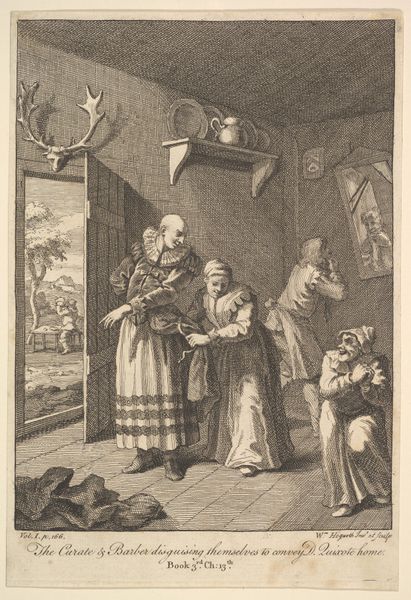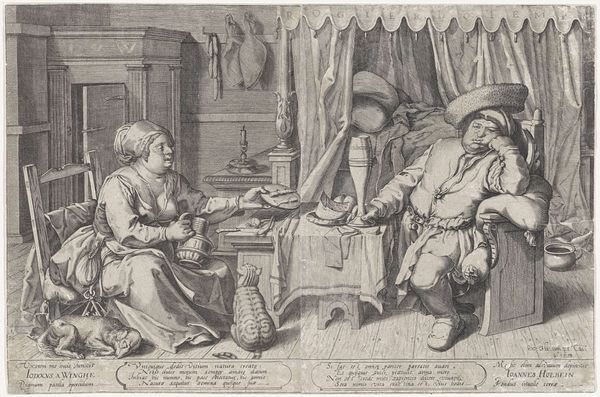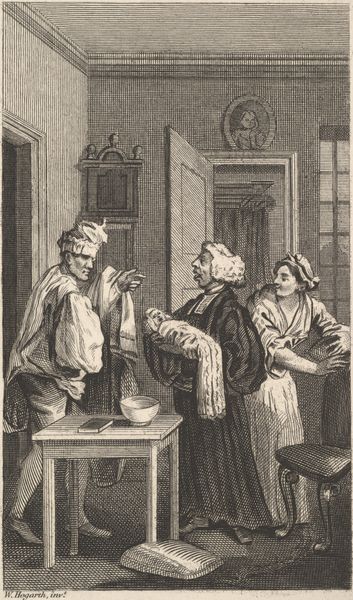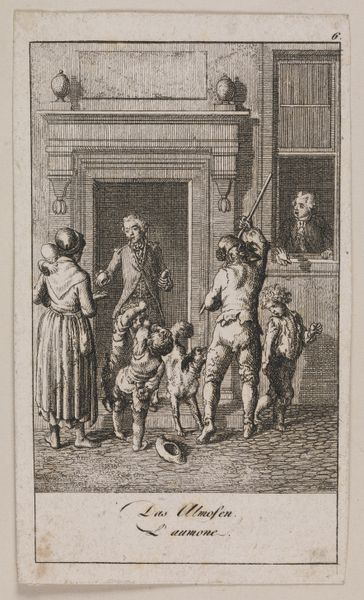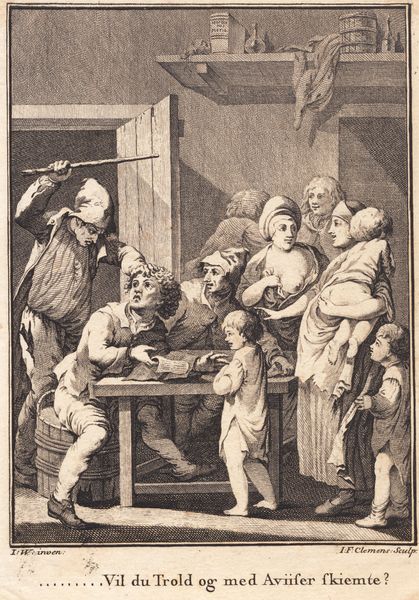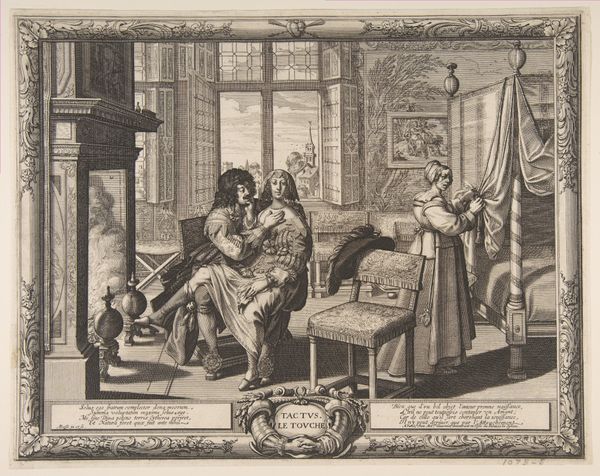
drawing, print, etching
#
drawing
#
narrative-art
#
baroque
# print
#
etching
#
figuration
#
men
#
genre-painting
Dimensions: Sheet (trimmed): 2 5/8 × 5 1/4 in. (6.7 × 13.3 cm)
Copyright: Public Domain
Editor: So, this is "The Slave Merchant," an etching and print by Claude Augustin Duflos le Jeune, created sometime between 1746 and 1747. The scene feels incredibly staged, theatrical almost. What historical factors might have influenced how this work was received by the public? Curator: Well, consider the period. It’s mid-18th century, the height of the Enlightenment in Europe, but also a period deeply enmeshed in colonial expansion and the transatlantic slave trade. Genre scenes like this, seemingly depicting everyday life, often served to exoticize the "Orient," a broad, ill-defined concept for the Near East and North Africa, while simultaneously reinforcing Western power structures. How do you see that power dynamic playing out here? Editor: I notice the composition divides neatly into two: the merchants counting coins, and the women huddled together looking dejected. Is it meant to serve as moral commentary, do you think? Curator: It’s tricky. We have to be cautious of projecting contemporary values onto the past. While the artist might have aimed for some level of critique, these images also participated in a broader cultural fascination with and objectification of non-European people. Etchings like this circulated widely. Where might they have been displayed, and for whom were they intended? Editor: Maybe in wealthy homes? To spark conversation… or just reinforce existing prejudices? So, the market demand itself, irrespective of the artist's intention, could contribute to harmful narratives. Curator: Precisely. And the Baroque style itself, with its theatrical flair, further shapes our reception. Does it encourage empathy, or does it distance us from the scene, turning it into a spectacle? Editor: I guess I hadn’t considered how the style could itself become another layer of complexity in interpreting the work's cultural role. I learned a lot; thank you! Curator: It’s fascinating how even seemingly simple images can reflect broader power dynamics. It definitely gives a new perspective when studying artworks!
Comments
No comments
Be the first to comment and join the conversation on the ultimate creative platform.

